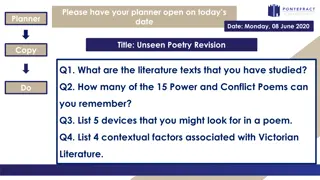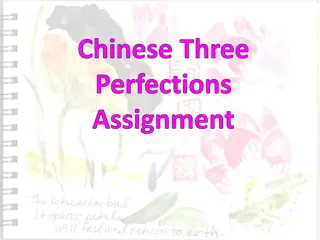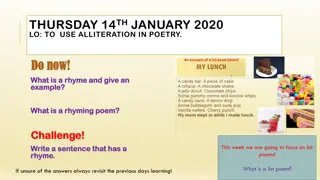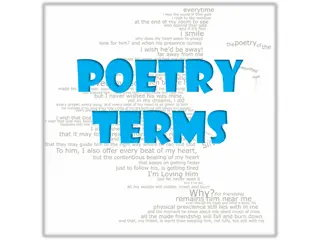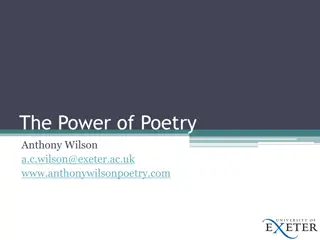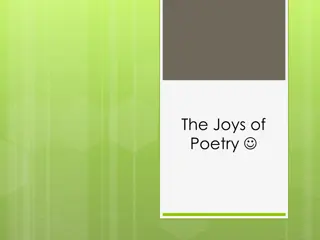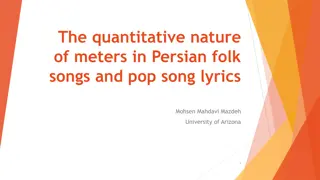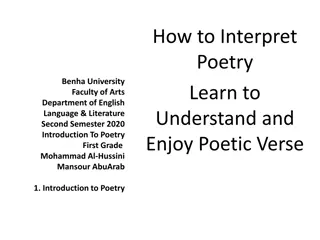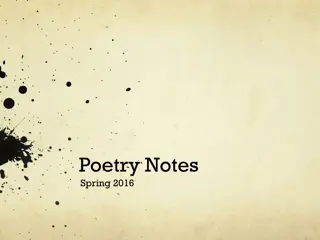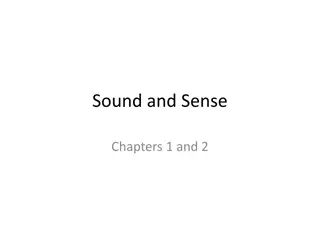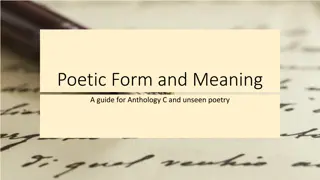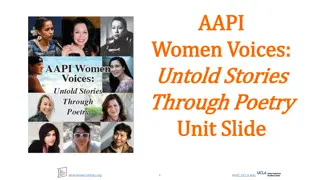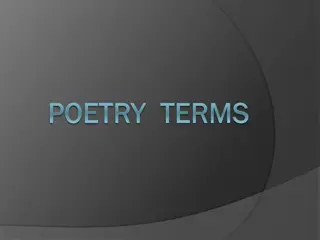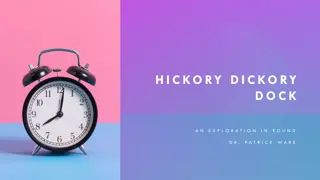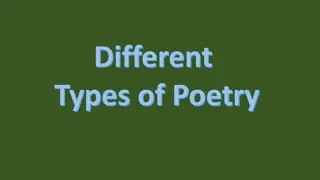Exploring Rhyme in Poetry
Discover the nuances of rhyme in poetry through various types such as end rhyme, masculine rhyme, feminine rhyme, identical rhyme, and internal rhyme. Dive into the art of repetition of syllables and patterns in poetry that add depth and musicality to verses.
Download Presentation

Please find below an Image/Link to download the presentation.
The content on the website is provided AS IS for your information and personal use only. It may not be sold, licensed, or shared on other websites without obtaining consent from the author. Download presentation by click this link. If you encounter any issues during the download, it is possible that the publisher has removed the file from their server.
E N D
Presentation Transcript
WARM-UP Write the first words that pop into your mind that rhyme with the following words: 1. Breath 2. Life 3. Alarming 4. Glow 5. Diabolic 6. Quiver 7. Fury 8. Bells 9. Abstract 10.Reign 11.Orange
Rhyme Repetition of syllables Most often at the end of a line of poetry Rhymed words usually share all sounds following the word s last stressed syllable
Rhyme Scheme Describes the pattern of end rhymes in a stanza Letters of the alphabet are used to code the rhyme scheme (ABAB, for example)
Some words are EYE rhymes they only rhyme when spelled, but not when pronounced. --> through and rough
END rhyme is more common the final syllables in the line are rhymed: Tyger, tyger, burning bright In the forests of the night (William Blake, The Tyger)
MASCULINE Rhyme is a common type of rhyming. The stressed syllable is the end of the line of poetry & it is the syllable which rhymes. hells and bells cat and rat annoy and destroy
FEMININE Rhyme occurs when the penultimate (second to last) syllable is the stressed syllable and rhymes with the penultimate syllable in another word (typically ing or er words). dicing and enticing table and label
IDENTICAL Rhyme uses the same, identical word twice in rhyming positions I can have another you in a minute / matter of fact, he ll be here in a minute
INTERNAL Rhyme is when words within a single line of poetry rhyme with each other a word in the middle of the line could rhyme with a word at the end of the line. Once upon a midnight dreary, while I pondered, weak and weary While I nodded, nearly napping, suddenly there came a tapping, As of someone gently rapping, rapping at my chamber door. (Edgar Allan Poe)
MONORHYME occurs when there is only one rhyme in the entire stanza. Silent, Silent Night by William Blake Silent Silent Night Quench the holy light Of thy torches bright For possessd of Day Thousand spirits stray That sweet joys betray Why should joys be sweet Used with deceit Nor with sorrows meet But an honest joy Does itself destroy For a harlot coy




